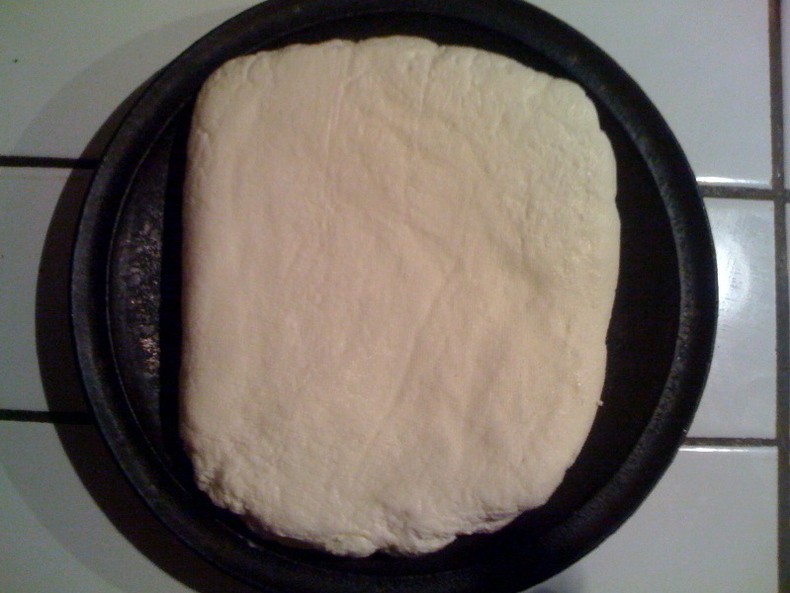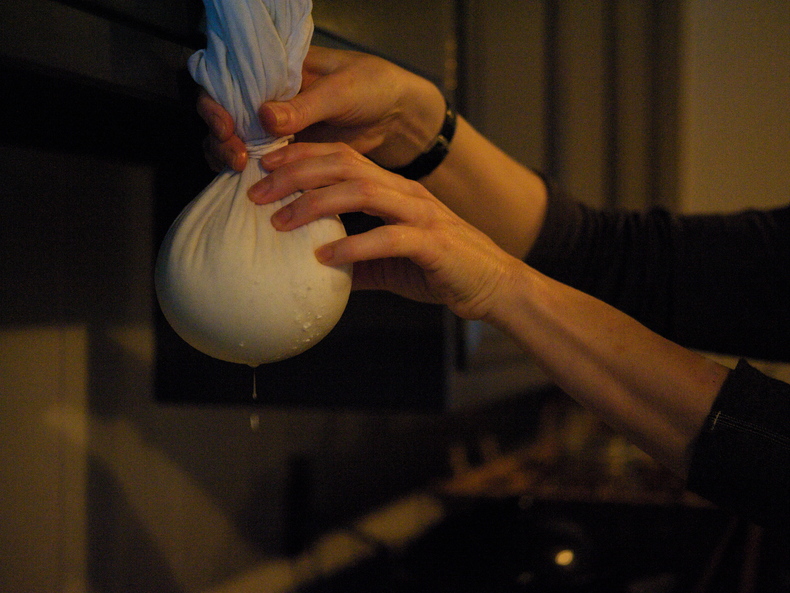2.8.10 Curds & Whey
This little Miss Muffett definitely enjoys eating freshly made curds. And so will you, when you make your own paneer (also spelled panir). This is that soft white cheese used in Indian cuisine. You probably know it from saag paneer, the Indian cousin of creamed spinach. Making paneer is quite similar to making ricotta, if you've ever done that. Even easier. It's just a simple coagulation of milk through the use of acid; lemon juice, in this case. The milk "breaks," separating into fluffy white curds and cloudy liquid whey. You gather the curds up into a clean cloth (cotton towel or cheesecloth) and hang it so that liquid drains away. If you leave it fairly soft—with a bit more liquid—it's known as chenna; taken to a firmer stage, it becomes paneer. It's delicious in rich curries, fritters, or simply cooked with vegetables like peas, chiles or greens.

a blank slate
If you prefer not to make your own paneer—basically boiling milk, adding vinegar or lemon juice, and letting the whey drain away from the separated curds, as above—look for it at the market, sometimes found frozen (and more common than you might think). But give it a whirl. It's an ancient technique, and a simple one, with very satisfying results. Save the whey to make pickles or add beneficial probiotics to smoothies, soups, etc. I was first inspired to make paneer in an attempt to recreate an incredibly ethereal smoky tomato curry I had when I was on my honeymoon in Rajasthan. Food is so essential to recapturing memories, and creating new ones...







0 Comments